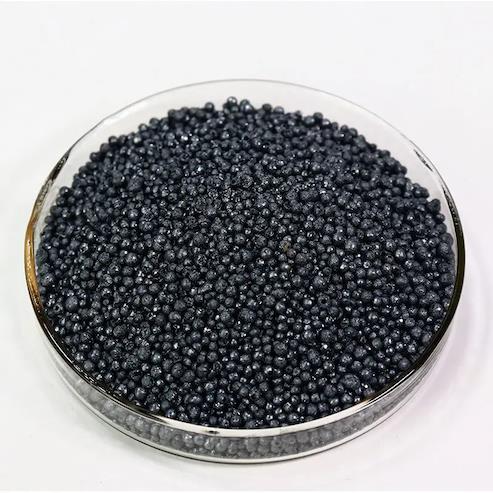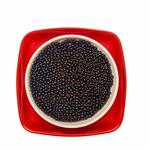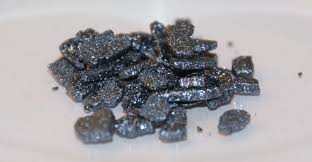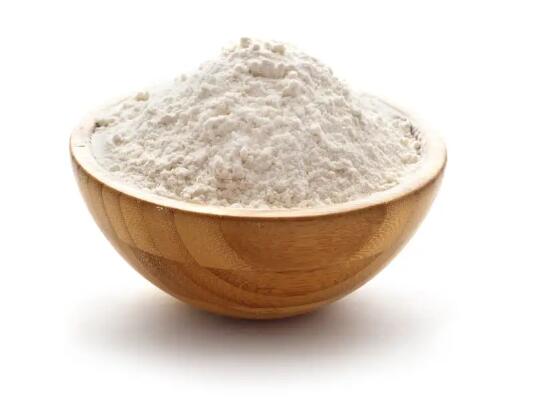Uses of Iodine
General description
Iodine is a chemical element with the symbol I and atomic number 53. The heaviest of the stable halogens, it exists as a lustrous, purple-black non-metallic solid at standard conditions that melts to form a deep violet liquid at 114 degrees Celsius, and boils to a violet gas at 184 degrees Celsius. However, it readily sublimes with gentle heat, resulting in a widespread misconception even taught in some science textbooks that it does not melt at standard pressure. The element was discovered by the French chemist Bernard Courtois in 1811, and was named two years later by Joseph Louis Gay-Lussac. Iodine occurs in many oxidation states, including iodide (I−), iodate (IO3−), and the various periodate anions. It is the least abundant of the stable halogens, being the sixty-first most abundant element. It is the heaviest essential mineral nutrient. Iodine is essential in the synthesis of thyroid hormones.[1] Iodine deficiency affects about two billion people and is the leading preventable cause of intellectual disabilities. Its appearance is as follows:

Figure 1 Appearance of Iodine.
Properties
Iodine is the fourth halogen, being a member of group 17 in the periodic table, below fluorine, chlorine, and bromine; it is the heaviest stable member of its group. (The fifth and sixth halogens, the radioactive astatine and tennessine, are not well-studied due to their expense and inaccessibility in large quantities, but appear to show various unusual properties for the group due to relativistic effects).
Iodine has an electron configuration of [Kr]4d105s25p5, with the seven electrons in the fifth and outermost shell being its valence electrons. The halogens darken in colour as the group is descended: fluorine is a very pale yellow gas, chlorine is greenish-yellow, and bromine is a reddish-brown volatile liquid. Iodine conforms to the prevailing trend, being a shiny black crystalline solid that melts at 114 °C and boils at 183 °C to form a violet gas. This trend occurs because the wavelengths of visible light absorbed by the halogens increase down the group (though astatine may not conform to it, depending on how metallic it turns out to be).
Uses
About half of all produced iodine goes into various organoiodine compounds, another 15% remains as the pure element, another 15% is used to form potassium iodide, and another 15% for other inorganic iodine compounds. Among the major uses of iodine compounds are catalysts, animal feed supplements, stabilisers, dyes, colourants and pigments, pharmaceutical, sanitation (from tincture of iodine), and photography; minor uses include smog inhibition, cloud seeding, and various uses in analytical chemistry. The iodide and iodate anions are often used for quantitative volumetric analysis, for example in iodometry. Iodine and starch form a blue complex, and this reaction is often used to test for either starch or iodine and as an indicator in iodometry. The iodine test for starch is still used to detect counterfeit banknotes printed on starch-containing paper.[2]
Elemental iodine is used as a disinfectant either as the element, or as the water-soluble triiodide anion I3− generated in situ by adding iodide to poorly water-soluble elemental iodine (the reverse chemical reaction makes some free elemental iodine available for antisepsis). Elemental iodine may also be used to treat iodine deficiency.[3] The antimicrobial action of iodine is quick and works at low concentrations, and thus it is used in operating theatres.[4] Its specific mode of action is unknown. It penetrates into microorganisms and attacks particular amino acids (such as cysteine and methionine), nucleotides, and fatty acids, ultimately resulting in cell death. It also has an antiviral action, but nonlipid viruses and parvoviruses are less sensitive than lipid enveloped viruses. Iodine probably attacks surface proteins of enveloped viruses, and it may also destabilise membrane fatty acids by reacting with unsaturated carbon bonds.[5]
References
[1]"Iodine". Micronutrient Information Center, Linus Pauling Institute, Oregon State University, Corvallis. 2015. Retrieved 20 November 2017.
[2]Emsley, John (2001). Nature's Building Blocks (Hardcover, First ed.). Oxford University Press. pp. 244–250. ISBN 978-0-19-850340-8.
[3]World Health Organization (2009). Stuart MC, Kouimtzi M, Hill SR (eds.). WHO Model Formulary 2008. World Health Organization. p. 499. hdl:10665/44053. ISBN 9789241547659.
[4]Patwardhan, Narendra; Kelkar, Uday (2011). "Disinfection, sterilization and operation theater guidelines for dermatosurgical practitioners in India". Indian Journal of Dermatology, Venereology, and Leprology. 77 (1): 83–93. doi:10.4103/0378-6323.74965. PMID 21220895.
[5]McDonnell G, Russell AD (1999). "Antiseptics and disinfectants: activity, action, and resistance". Clin Microbiol Rev. 12 (1): 147–79. doi:10.1128/CMR.12.1.147. PMC 88911. PMID 9880479.
You may like
Related articles And Qustion
See also
Lastest Price from Iodine manufacturers

US $0.00-0.00/kg2025-04-21
- CAS:
- 7553-56-2
- Min. Order:
- 1kg
- Purity:
- 99.99%
- Supply Ability:
- 20 tons

US $0.00-0.00/kg2025-04-21
- CAS:
- 7553-56-2
- Min. Order:
- 1kg
- Purity:
- 99.99%
- Supply Ability:
- 20 tons




